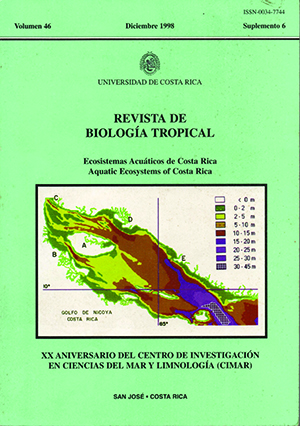Abstract
There are no detailed studies on the sympatric dolphin species of Golfo Dulce, Studies in other areas have indicated that the presence of sympatric dolph ins is maintained by each species using different habitats. This study describes the distribution of bottle nose (Tursiops truncatus) and pan-tropical spoiled (Stenella allenuata) dolphins in Golfo Dulce and its relation to habitat. A total of 428 boat surveys were conducted from September 1991 through December 1992. There were 529 bottlenose dolphin sightings and 200 spotted dolphins sightings. The two species were only once observed in mixed aggregations. There were differences in relative abundance and group size between both dolphin species. Bottlenose dolphins were found mostly in shallow waters, close to shore, near rivers. and along steep marine slopes. Spotted dolphins were associated with deeper waters and increased distance from shore. Despite apparent differences in habitat preferences. the two dolphin species were commonly observed in tile same areas, albeit at different times, due in part to seasonal variations in dolphin distribution and habitat preference. Most notably during the Late Wet season of 1991 bottlenose dolphins were found in the middle and spotted dolphins at both ends of the Gulf. This pattern was almost reversed during the Late Wet season of 1992. The observed seasonal variation patterns are inadequately explained by habitat-preference arguments alone.Comments

This work is licensed under a Creative Commons Attribution 4.0 International License.
Copyright (c) 1998 Revista de Biología Tropical
Downloads
Download data is not yet available.


